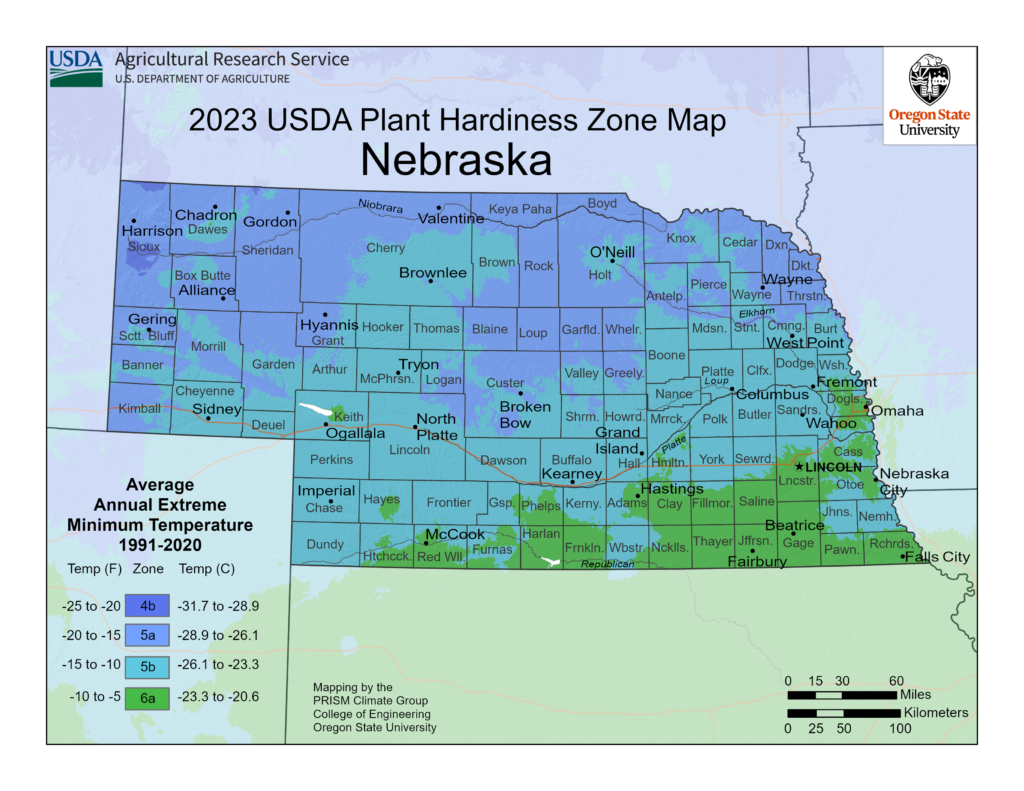Nebraska’s frigid winters may seem inhospitable for tropical palms, but strategic planning, winter protection, and cold-hardy varieties allow certain palms to persist in sheltered microclimate spots. Most palms grown in Nebraska will need to be kept indoors in a pot to avoid dying during winter freezes.

Nebraska USDA Hardiness Zones
Zone Range: 4a-6a
Consult the USDA map to determine best palm species for your exact region.
Cold Hardy Palms for Nebraska
Most palm species will quickly die during Nebraska winters, though one is known to survive:
Needle Palms: The only palm in existence able to grow in such low temperatures is the needle palm. This clumping palm withstood -20°F in lab tests.
Winter Protection Strategies
If you do attempt to grow a cold hardy palm variety in Nebraska consider these winter protection strategies.
Sheltered placement enhances survival odds:
- Foundations facing south for radiant building heat
- Against concrete/brick walls and driveways
- Near boulders, stones, and rock gardens
Further protect with late fall insulation:
- Consider using frost cloth to protect your palms.
Indoor Palm Care
Growing small palms in containers is the only viable way to keep other palm tree species alive in Nebraska. Planting your palm tree in a pot allows moving them into garages, sunrooms, or under plant lights during winter months.
Here are the best indoor palm varieties to consider planting:
- Kentia Palm Tree
- Areca Palm
- Lady Palm
- Chinese Fan Palm
- Majesty Palm
- Sago Palm
Conclusion
Palms grown indoors can add tropical flair to your Nebraska home. Be prepared for potential freeze damage to leaves and spears if you attempt the impossible task of growing a palm tree outdoors in Nebraska. It’s not recommended to plant palms outdoors in Nebraska as they’ll likely die during winter.
